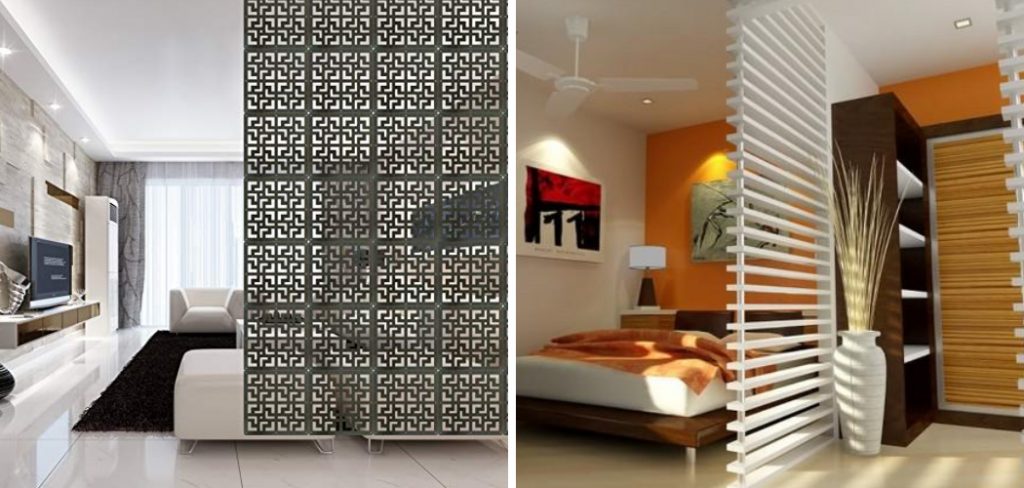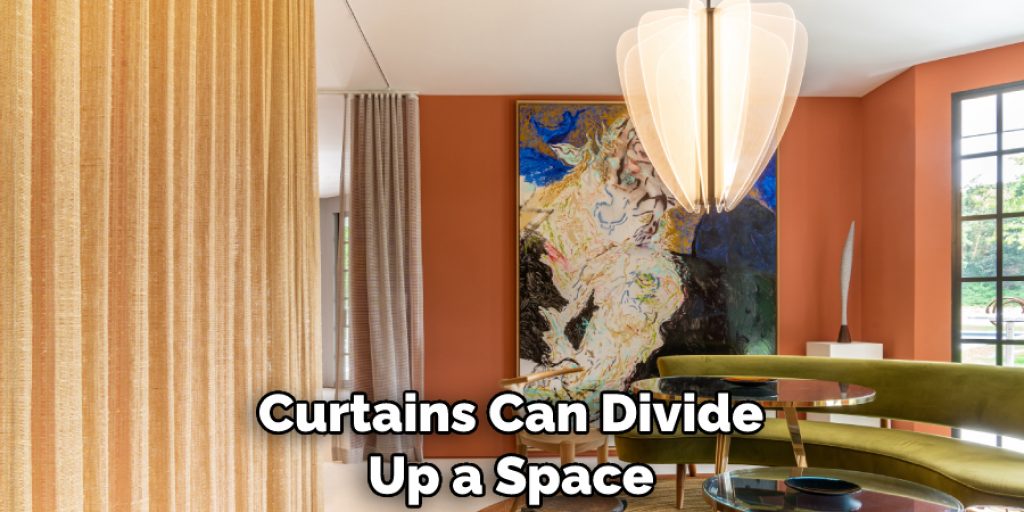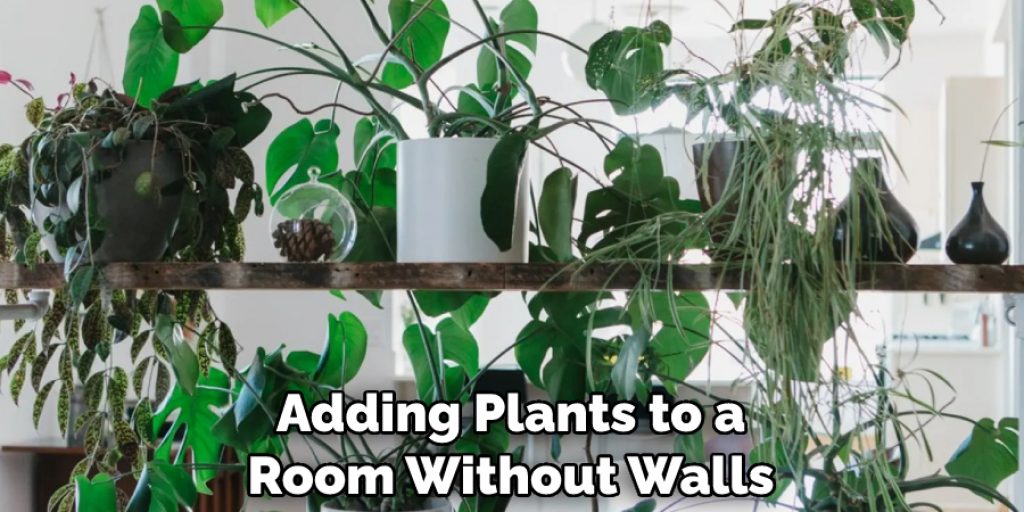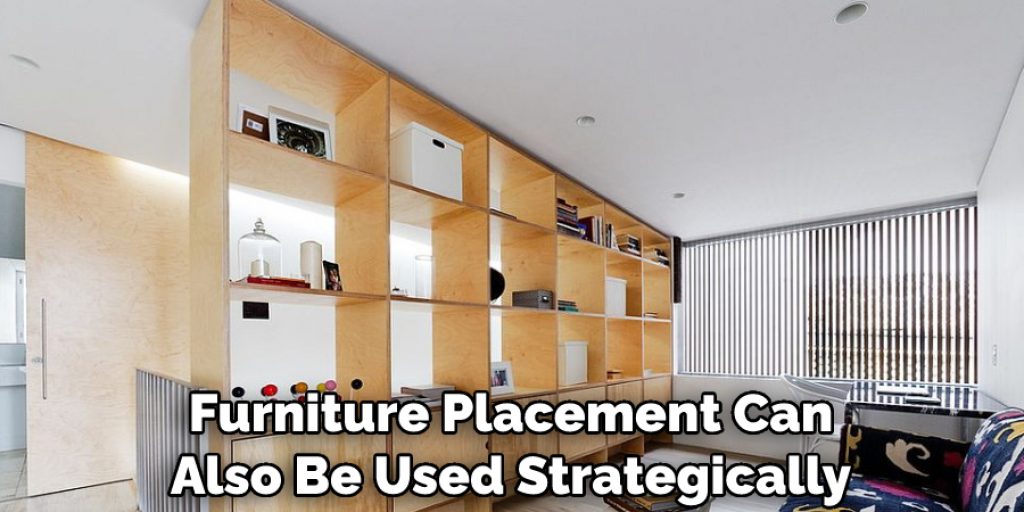How to Divide a Room Without Walls
If you’re looking for a way to divide up a room without completely changing the layout, learning to divide a room without walls is an efficient and cost-effective solution. This method of dividing space involves using furniture or other items to create separate spaces within one room without building permanent walls. It’s also great for renters who don’t want to make changes that could affect their security deposit.

The advantage of dividing a room without walls is that it allows for more flexibility when decorating or rearranging the space. Without the constraints of traditional wall construction, furniture and other decorative items can be moved around as needed to create different looks.
Additionally, since walls are not required, there is less energy associated with their installation and maintenance—saving both time and money. In this blog post, You will learn in detail how to divide a room without walls.
Step-by-Step Processes for How to Divide a Room Without Walls
Step 1: Inspect the Room
The first step to dividing a room without walls is to get familiar with the space. Measure and note down the size and shape of the room, along with noting any furniture that is in it. There are many options for dividers, such as curtains, partitions, bookshelves, or rugs. Choose the best option for the room size, shape, and your preference.
Step 2: Choose the Divider Option
Once you have inspected the room, determine which option best fits your needs. Curtains can divide up a space without taking away from its open feel, making it perfect for bedrooms and living rooms. Partitions are good for dividing larger spaces like offices, while bookshelves or floor-to-ceiling shelves can be used to both divide space and add extra storage. Rugs can also help separate certain room areas, like a living area from an office or dining area.

Step 3: Install the Divider
Once you have chosen the best option for your space, it’s time to start the installation. If you’re using curtains, use curtain rods to hang them from the ceiling or wall. Partitions are usually freestanding and can be moved around easily, while bookshelves and rugs should be secured in place.
Accessorizing is key when dividing a room without walls! Adding curtains, rugs, or cushions can help to bring a fun and inviting atmosphere to your space. You can also add lamps and plants to make the room look more complete.
Step 4: Create Separate Areas
Once you have installed the dividers and added accessories, it’s time to turn your space into separate areas. Use furniture to create different zones, like a living room in one corner and an office area in another. Creating different lighting sources within the room can help to break up large spaces without walls. You can use table lamps, wall lights, and overhead lighting to create different levels of illumination that will make the space feel more inviting.
Step 5: Add Artwork
Adding artwork to a room without walls is a great way to personalize it and make it your own. Hang paintings or photographs on the walls to help break up the space and make it feel more inviting. Adding plants to a room without walls helps to bring life into the space. You can use large potted plants, hanging plants, or even indoor trees to create areas of interest that will also help break up the room and add some natural beauty.

Step 6: Utilize Shelving
Shelving can be used to both divide up a room and add storage. You can use floor-to-ceiling shelves or bookshelves to break up the space while also providing extra storage for your belongings. The furniture you choose should be based on your plan to use the space. Pick pieces that are functional and stylish, and make sure they work well with the theme of your room. This will help tie everything together and make it look more cohesive.
With a little creative thinking and a lot of trial and error, you can have the perfect space that will be both functional and aesthetically pleasing.
Safety Tips for How to Divide a Room Without Walls
- Consider the space and your needs before taking on the project. Make sure that there is enough space to divide the room and that you have all of the tools necessary for installation.
- Calculate the exact measurements of the room beforehand so that you know exactly how much material or structure you will need to purchase and install.
- Make sure that the area is well-ventilated and free from hazardous substances or items to ensure a safe environment while working.
- Wear protective gear, such as goggles, gloves, masks, etc., when installing the structures or materials needed for room division.
- If using curtains instead of walls, make sure there are enough support structures, such as poles or hooks, to hold the curtains in place.
- If using any drills or other power tools, make sure they are securely fastened and not loose.
- Ensure that all materials used are fire-resistant and do not emit toxic fumes.
- When cutting through walls, use caution to avoid electrical wires that may be hidden in the wall.

Following these safety tips will help you successfully divide a room without walls and create space for whatever purpose you need it for.
What Are the Most Cost-effective Ways to Divide a Room Without Walls?
When it comes to dividing a room without walls, you want to ensure that the solution you choose is cost-effective and aesthetically pleasing. Here are some of the best methods for dividing a room without breaking the bank:
- Curtains or Screens: Hanging curtains or screens across an open space is inexpensive to divide a room without walls. You can choose from a variety of fabric types and colors, so you can find something that will match your decor and be within your budget.
- Room Partition: If you’re looking for a more permanent solution, consider getting a room partition. This type of structure is typically made of wood or metal and can be customized to fit your needs. Room partitions are great for dividing large spaces in an attractive way.
- Shelves: Installing shelves is a great way to create a wall-like effect without actually building one. You can use the shelves to separate the space while also displaying books, collectibles, and other decorative pieces.
- Sliding Doors: Another great way to divide a room without walls is by using sliding doors. They provide privacy, and you can choose from several styles and materials to match your decor while adding some unique texture to the space.
No matter what method you choose, dividing a room without walls is a great way to save money while still creating the illusion of two separate spaces. Just be sure to keep your budget in mind and choose a solution that will work best for you and your space.
What Kinds of Rooms Benefit Most From Being Divided Without Walls?
Open-plan rooms that are used for multiple activities, such as a living room and dining room combination or a home office/recreation area, can benefit most from being divided without walls. In these cases, having physical walls to separate the two areas may not be practical because it takes away from the openness of the space. Additionally, adding walls can be expensive and time-consuming.
Instead, there are a few creative ways to divide these rooms without compromising on the open feel. Room dividers, such as folding screens or curtains, can create separate areas while preserving the space’s openness. Furniture placement can also be used strategically to define different areas in a room.

Shelves and bookshelves placed in the middle of a room can break up the space without actually taking away from it. For example, placing a shelf between two seating areas can create an effective division while maintaining the room’s openness.
Conclusion
One of the major disadvantages of dividing a room without walls is that it does not offer much soundproofing. Depending on the type of space you are trying to divide, sound can travel from one side to the other, making it difficult for people on either side to concentrate or communicate effectively.
Additionally, suppose multiple activities are taking place in the same room. In that case, it can be difficult to create a visually appealing division that allows everyone to go about their tasks without disrupting one another.
In conclusion, the most effective way to divide a room without walls is to use movable furniture, screens and curtains, and other creative design elements such as rugs, bookshelves, and artwork. Not only are these methods budget-friendly, but they can also be easily changed around as needed or moved if you decide to move locations.
I hope reading this post has helped you learn how to divide a room without walls. Make sure the safety precautions are carried out in the order listed.




